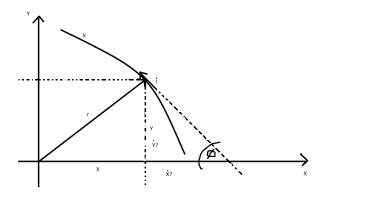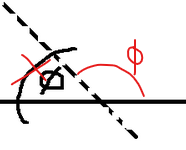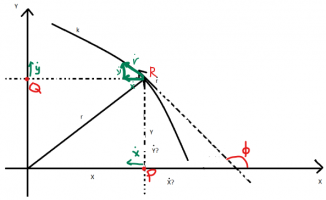Hi,
I read this document https://www-users.cse.umn.edu/~mille003/1372curvature.pdf which I found while googling on curvature formula derivation. This is quite well described but I got stuck at one equation, right in the middle. The author says that curvature is essentially a derivative of an angle which position vector makes with a positive X axis, namely [imath]\frac{d\phi}{dt}[/imath]. That of course makes a perfect sense. Then author says that we can also get a measure of how fast the curve is turning by focusing on the curve alone and shows equation [math]k = \frac{d\phi}{ds} = \frac{d\phi}{dt}\frac{dt}{ds}[/math] with a note that in the last equality he used a chain rule. Here is my problem - how can a derivative of angle in respect to path become a derivative of angle in respect to time, multiplied by a derivative of time in respect to path? Especially the last part is confusing and I have a hard time relating it to physical world - a derivative of time in respect to path? What is it? The converse would be a speed.
I read this document https://www-users.cse.umn.edu/~mille003/1372curvature.pdf which I found while googling on curvature formula derivation. This is quite well described but I got stuck at one equation, right in the middle. The author says that curvature is essentially a derivative of an angle which position vector makes with a positive X axis, namely [imath]\frac{d\phi}{dt}[/imath]. That of course makes a perfect sense. Then author says that we can also get a measure of how fast the curve is turning by focusing on the curve alone and shows equation [math]k = \frac{d\phi}{ds} = \frac{d\phi}{dt}\frac{dt}{ds}[/math] with a note that in the last equality he used a chain rule. Here is my problem - how can a derivative of angle in respect to path become a derivative of angle in respect to time, multiplied by a derivative of time in respect to path? Especially the last part is confusing and I have a hard time relating it to physical world - a derivative of time in respect to path? What is it? The converse would be a speed.



